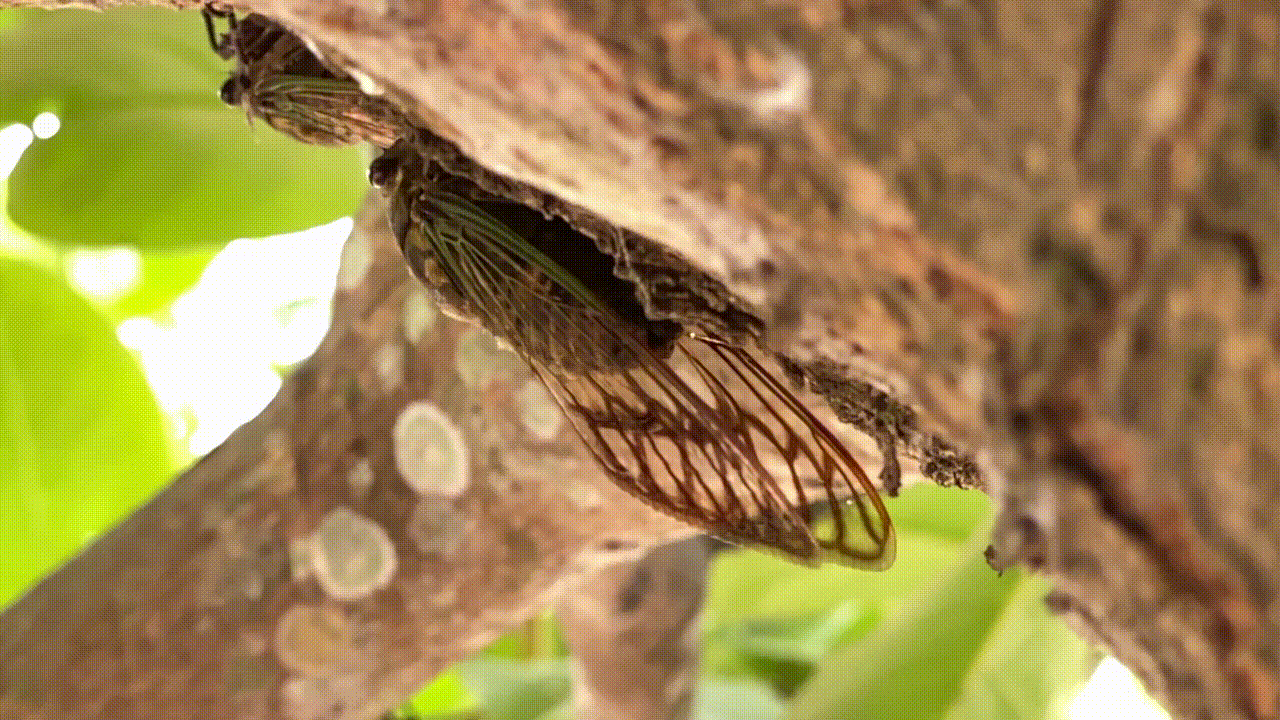New Research
Alaska's Frigid North Slope Was Once a Lush, Wet, Dinosaur Hotspot, Fossils Reveal
Conditions north of the Arctic Circle, where dinosaurs roamed in abundance during the mid-Cretaceous, were warmer than today, with rainfall comparable to “modern-day Miami”
Archaeologists Keep Finding Preserved Human Brains. But How Do the Organs Remain Intact?
Scientists have unearthed more than 4,400 human brains—some more than 12,000 years old—making them less rare than thought, a new study finds
Plastics Contain Thousands More Chemicals Than Thought, and Most Are Unregulated, Report Finds
A new database catalogs 16,000 chemicals found in plastics and identifies more than 4,200 that are potentially hazardous to human health and the environment
Daddy Longlegs Have Four Extra, Hidden Eyes, Researchers Say
The new discovery could help scientists unravel the mystery of how the arachnids evolved across some 537 million years
Most Astronauts Experience 'Space Headaches' While on the ISS, Study Finds
Surveys of 24 astronauts who traveled to the International Space Station found that nearly all of them reported headaches, and many of these occurred past the first week in space
Python Meat Could Be a Sustainable, Nutritious Food Source, Scientists Say
The snakes may be some of the most resource-efficient animals to farm on the planet, a new study suggests
Mars Has an Unexpected Influence on Earth's Oceans and Climate, Repeating Every 2.4 Million Years, Study Finds
The gravitational interactions between Mars and Earth as they orbit the sun may have periodically promoted a warmer climate and changes in ocean circulation on our home planet
Whales That Go Through Menopause Live Longer and May Help Care for Grandchildren
Alongside humans, five species of toothed whales are known to experience menopause. A new study suggests they evolved the trait to increase their lifespan
For Most Mammal Species, Males Actually Aren't Larger Than Females, Study Finds
New research upends a long-held theory that male mammals tend to be bigger than their female counterparts
Modern Indian People Have a Wide Range of Neanderthal DNA, Study Finds
Genomes of Indian people today reveal links to a prehistoric migration and a group of Iranian farmers, as well as several new sequences from the Neanderthal genome
Don't Look Up: Cicadas Produce High-Speed Jets of Urine
The noisy, winged insects produce pee the same way that much larger animals do, according to a new study
Asian Elephants Bury Their Dead, New Research Suggests
In India, five dead calves were found buried on their backs in irrigation ditches, with evidence that multiple herd members had participated in the burials
Mesoamericans May Have Drunk Tobacco During Rituals 1,000 Years Ago
New research reveals evidence of nicotine residue on vases unearthed in Guatemala
Scientists Grow Elephant Stem Cells in Key Step Toward Woolly Mammoth 'De-Extinction'
The team's lofty goal of "resurrection" is still far from reality, but scientists say the advancement in understanding cells could help with elephant conservation
Fossil Hunter Discovers Gigantic Crab in New Zealand—a New, Extinct Species
The massive creature is 8.8 million years old, and its modern descendants in Australia can grow to be the weight of a human toddler
Stone Tools Found in Ukraine May Be the Oldest Evidence of Early Humans in Europe
The 1.4-million-year-old rocks may have belonged to Homo erectus, and they shed light on migrations of human ancestors, a new study suggests
Scientists Unravel the Mysteries of Earth's Towering Star Dunes—Massive, Moving Mountains of Sand
Using new technologies, researchers revealed an enormous star dune in Morocco formed more quickly than thought, and it's on the move
Jupiter's Moon Europa May Have Less Oxygen Than Previously Thought
The new findings could have implications for whether Europa's vast ocean contains the conditions necessary to support life
Archaeologists May Have Found Traces of a Viking Marketplace in Norway
Ground-penetrating radar found evidence of a trading hub buried near the island of Klosterøy's historic monastery
Why Do Poison Dart Frogs 'Tap Dance' With Their Toes? Research Sheds Light on Feeding Time Footwork
Scientists observed frogs tapping their toes up to 500 times per minute when prey was present, suggesting the behavior is related to predation
Page 4 of 242
:focal(1024x683:1025x684)/https://tf-cmsv2-smithsonianmag-media.s3.amazonaws.com/filer_public/a2/ed/a2edc4c0-2b5b-4b65-9606-33bc63f9ed8a/dscf6998.jpg)
:focal(450x300:451x301)/https://tf-cmsv2-smithsonianmag-media.s3.amazonaws.com/filer_public/7a/0c/7a0ce4aa-4806-4cfa-be66-53d24fe02d9c/sei_196636575.png)
:focal(1500x871:1501x872)/https://tf-cmsv2-smithsonianmag-media.s3.amazonaws.com/filer_public/87/d1/87d1d42d-7802-4ef3-a2fe-72a78051c946/gettyimages-98057150.jpg)
:focal(1024x575:1025x576)/https://tf-cmsv2-smithsonianmag-media.s3.amazonaws.com/filer_public/5d/f6/5df61598-eafd-4d89-9600-c43992cb1e01/phalangium_opilio_01_mk.jpg)
:focal(960x640:961x641)/https://tf-cmsv2-smithsonianmag-media.s3.amazonaws.com/filer_public/f2/88/f2880469-c4f9-4ef7-8631-95e644d29d05/iss.jpeg)
:focal(1024x683:1025x684)/https://tf-cmsv2-smithsonianmag-media.s3.amazonaws.com/filer_public/52/4b/524bf090-00ea-4348-b810-1e4e151c41a8/49122460068_97fb2122d6_k.jpg)
:focal(681x512:682x513)/https://tf-cmsv2-smithsonianmag-media.s3.amazonaws.com/filer_public/0a/d7/0ad73452-f6d2-47e4-ad5b-d4bc1abae738/ezgif-3-0b922f8a81_cropped.jpg)
:focal(1929x1258:1930x1259)/https://tf-cmsv2-smithsonianmag-media.s3.amazonaws.com/filer_public/fc/b2/fcb2f4a1-dccc-4314-b739-e5e5b993f77b/gettyimages-547332154.jpg)
:focal(1957x1323:1958x1324)/https://tf-cmsv2-smithsonianmag-media.s3.amazonaws.com/filer_public/b3/7b/b37b38b2-5ed2-4669-8957-a961d4e7f606/gettyimages-474621363.jpg)
:focal(2563x1709:2564x1710)/https://tf-cmsv2-smithsonianmag-media.s3.amazonaws.com/filer_public/b1/e6/b1e638dc-f18c-41d9-beeb-10e7505d2dce/gettyimages-527487618.jpg)

:focal(640x482:641x483)/https://tf-cmsv2-smithsonianmag-media.s3.amazonaws.com/filer_public/16/08/16084453-c818-4c07-90da-c962fbbb4887/image4_2.jpeg)
:focal(1007x758:1008x759)/https://tf-cmsv2-smithsonianmag-media.s3.amazonaws.com/filer_public/fc/b6/fcb6694b-56d5-4f6b-a8cc-6a7dbc5b6a22/urn_cambridgeorg_id_binary-alt_20240221164013-60853-optimisedimage-png-s0003598x24000139_fig5.jpeg)
:focal(2351x1388:2352x1389)/https://tf-cmsv2-smithsonianmag-media.s3.amazonaws.com/filer_public/f2/9b/f29bea4f-58ef-47a2-9472-28e132675033/gettyimages-517209236.jpg)
:focal(710x469:711x470)/https://tf-cmsv2-smithsonianmag-media.s3.amazonaws.com/filer_public/c4/08/c40878e0-e98d-4124-b364-4911b87266ad/fossil-unearthed-in-ne.jpg)
:focal(960x411:961x412)/https://tf-cmsv2-smithsonianmag-media.s3.amazonaws.com/filer_public/dc/3f/dc3f828a-e6b1-4503-9488-ce62954969e7/garba_et_al_media_fig_03.jpg)
:focal(1536x1156:1537x1157)/https://tf-cmsv2-smithsonianmag-media.s3.amazonaws.com/filer_public/b1/fe/b1fe862d-5924-4227-902a-0cb0b0ac43e8/twyn-tywod-seren-lala-lallia-erg-chebbi-morocco-star-dune.jpeg)
:focal(960x850:961x851)/https://tf-cmsv2-smithsonianmag-media.s3.amazonaws.com/filer_public/30/ee/30ee9357-26df-4740-90d0-81d52bd9efeb/pia20025large.jpg)
:focal(791x595:792x596)/https://tf-cmsv2-smithsonianmag-media.s3.amazonaws.com/filer_public/7b/7b/7b7b593f-d25b-468a-b2a3-acb1d5de7f92/2322254.jpeg)
:focal(2144x1429:2145x1430)/https://tf-cmsv2-smithsonianmag-media.s3.amazonaws.com/filer_public/60/15/6015c016-7397-4805-82d3-1c60d933f17c/9467039017_3ac79d7c71_o.jpg)